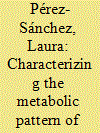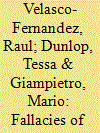| Srl | Item |
| 1 |
ID:
162900


|
|
|
|
|
| Summary/Abstract |
The extreme degree of openness of contemporary urban systems with regard to both economy and population creates a serious challenge for the study of urban energy metabolism. A novel tool based on Multi-Scale Integrated Analysis of Societal and Ecosystem Metabolism (MuSIASEM) is proposed to overcome these challenges. It consists of an end-use matrix, a coherent multi-level integrated characterization of the uses of different forms of energy carriers (electricity, heat, fuels) for the various tasks performed in the city, including private and public mobility, tourism, commercial and residential activities. The end-use matrix integrates quantitative data referring to different dimensions (i.e. energy, human activity, land use, value added) and hierarchical (economic sectors and functional elements at lower levels) and spatial scales (i.e. individual buildings, neighborhoods, and the city as a whole). The end-use matrix provides information on both extensive (flows) and intensive variables (flow/fund ratios or benchmarks). Benchmarks are important for policy-making and allow a meaningful comparison of energy performance across hierarchical levels within the urban system, and among different urban systems. The approach is illustrated for Barcelona, a global city characterized by an important service sector.
|
|
|
|
|
|
|
|
|
|
|
|
|
|
|
|
| 2 |
ID:
171388


|
|
|
|
|
| Summary/Abstract |
The strategy of energy efficiency to save energy is deceptively simple: the idea is to use less input for the highest amount of useful output. However, on a practical and conceptual level, efficiency is an ambiguous and problematic concept to implement. Of particular concern is the lack of contextual and qualitative information provided in energy efficiency measurements based on simple ratios. Oversimplification of efficiency measurements can have a detrimental effect on the choice of energy policies. Efficiency measurements are particularly problematic on a macroeconomic scale where a significant amount of meaningful information is lost through the aggregation of data into a simple ratio (economic energy intensity). First, practical examples are presented flagging conceptual problems with energy efficiency indicators, then an alternative accounting method—the end-use matrix—based on the concept of the metabolic pattern of social-ecological systems is illustrated to show the possibility of enriching efficiency indicators by adding qualitative and contextual information across multiple scales and dimensions. This method unpacks and structures salient energy input and output information in a meaningful and transparent way by generating a rich multi-level and multi-dimensional information space.
|
|
|
|
|
|
|
|
|
|
|
|
|
|
|
|